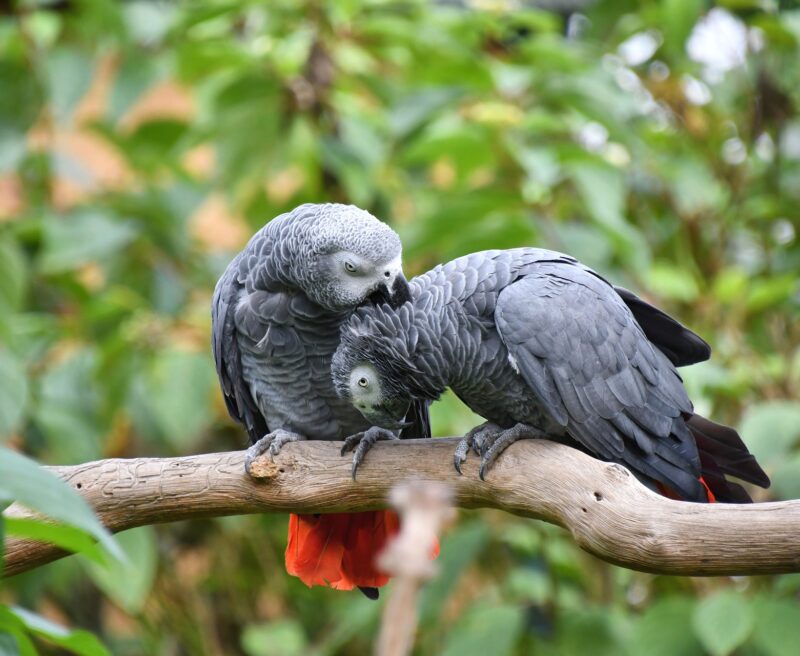Grey Parrot
Species Data
Class: Aves
Order: Psittaciformes
Family: Psittacidae
Scientific Name: Psittacus Erithacus
IUCN Red List status: Endangered
Description
Native to the forests of central Africa, this species is the largest parrot found anywhere in the continent. Grey Parrots have silver feathers, a white mask and a bright, reddish tail. They are also extremely clever and known for their impressive mimic of human speech – which has also unfortunately made them one of the most popular pet birds in the world. Research has shown that they also possess cognitive skills equal to that of a five-year-old child and will help members of their species without expecting anything in return.
Behaviour
Grey Parrots are a social species, flying through the skies in flocks and roosting in large groups amid the treetops. Their main diet is a variety of fruits and seeds and their strong beaks allow them to tear open foods such as oil palm nuts and cola plant berries. Grey Parrots mate for life and will search for a mate between three and five years of age. The pair will make a nest in pre-existing tree cavities 10-30m above ground and lay three to four eggs which will be incubated by the female. Nesting is usually solitary, but can take place in loose colonies.


Habitat
The Grey Parrot resides in Central Africa’s dense forests, extending from south-eastern Côte d’Ivoire through to the moist lowland forests of West Africa to Cameroon and on to Uganda, Kenya, Tanzania and Angola.
Threats and Conservation
The latest IUCN assessment uplisted the Grey Parrot to Endangered in 2018 due to the extent of the annual harvest for the international pet trade, in combination with the rapid rate of habitat loss. From 1982 to 2014, over 1.3 million wild-caught individuals entered international pet trade, with over hundreds of thousands of others dying in transit or poached illegally from the forests of West and Central Africa. Grey Parrots are particularly vulnerable to trappings because they concentrate in traditional nesting, roosting and drinking sites, while their gregarious and social nature also makes them relatively easy to catch.
Deforestation has also damaged their population and could possibly be a larger threat than the pet trade in Cameroon – the loss of large trees for nesting is hugely detrimental for reproduction rates.
